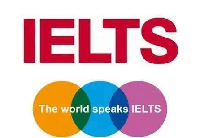
The IELTS Reading module requires candidates to read 3 essays and complete 40 questions within one hour to test their reading speed and reading comprehension. The topics of the articles cover a wide range, covering natural sciences such as biology and geography; Social sciences such as education, history, history, psychology articles; There are also biographical articles. Most of the sources are excerpts from articles on scientific magazine websites such as New Scientist, The Economist, American Scientist, etc. In the preparation stage, students need to train their understanding of the text through daily intensive reading exercises, and at the same time accumulate new words and sentence expressions. Combined with extensive reading training, read a wide range of articles on a variety of topics, while accumulating background knowledge, train to improve your reading speed.
The following reading tips were provided by the British Council's East Asia English Assessment Panel
Reading Tips
Reading skills
1. Choose a variety of texts and combine reading for studying with reading for pleasure.
Immerse yourself in all kinds of English articles, and learn through the reading process.
2. Spend 20-30 minutes every day reading different texts: newspaper articles, blogs, books, textbook activities.
Spend 20-30 minutes a day reading different types of articles, such as newspaper articles, blogs, books, teaching material exercises, etc.
3. Improve your vocabulary by looking up common words (words you hear a lot) in the dictionary.
Look up common words (frequently heard words) through the English dictionary to expand your vocabulary.
4. Try different techniques while reading: skim and scan the text quickly, answer questions in detail, summarise the main idea(s).
Try different reading techniques: skim quickly, skim through the text, answer questions in detail, and summarize the main idea of the text.
5. Choose topics of interest but also try to read texts on various topics as IELTS chooses subjects from many fields.
You can choose the reading material that interests you, and also read a wide range of articles on different topics, because the IELTS test has a wide range of topics.
6. Discuss some interesting texts with your friends and exchange ideas in English.
Discuss some interesting articles with friends and exchange their views in English.
7. Read for speed. Set a timer and try to read a text within the time limit (e.g., 5 mins). Check your understanding. Reduce the time limit as you improve and get faster (e.g.,from 5 mins to 4 mins to 3 mins).
Pay attention to increasing the reading speed. Use a timer to finish reading an article within the allotted time (e.g. 5 minutes) and check that your understanding is correct. As your reading ability improves, gradually shorten your reading time limit to improve your reading speed (e.g., from 5 minutes to 4 minutes or 3 minutes).
8. Read aloud with your friends or even by yourself. You could record yourself if you wish. Listen to how you sound. This will help with your fluency and pronunciation. It will also build your self-confidence.
Reading aloud alone or with friends, recording as you read, and then checking and improving your fluency and pronunciation by listening to the recordings will also help boost your confidence.
9. Familiarise yourself with the style of the exam and how long each part takes. You need to develop skills to answer each type of question in the reading examination. Questions could take the form of any of the following:
Familiarize yourself with the exam style and the time it takes for each section. You'll need to develop your skills in order to become proficient in answering the various types of questions in the reading section. The IELTS Reading test may contain the following question types:
• Multiple choice Multiple choice
• Short answer questions
• Sentence completion questions
• Notes/ table/ form/ summary/ flow chart/diagram completion questions Complete notes, summaries, tables, or flowcharts
• Yes, no, not given or True, false, not given "Yes", "No", "Not Mentioned" or "True", "False", "Not Mentioned" classes
• Classification questions
• Matching matching questions
• Choosing headings Choose the appropriate subheading for a paragraph or section of an article
• Scanning & identifying location of information Browse text and determine the location of information
• Labelling a diagram which has numbered parts Label the chart
Make reading a habit!
